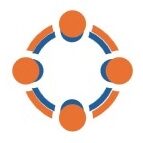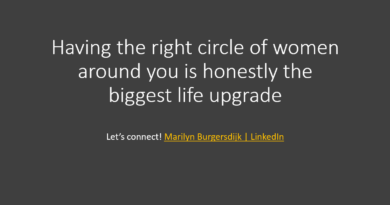Why We All Perceive the World Differently
Communication stands at the core of every successful interaction. The way every single one of us perceives things, situations and the way we think defines our lives. Navigating these spaces, understanding how we perceive the world and how others might perceive it differently is crucial. Use below tools to understand perception.
Imagine the workplace as a bustling marketplace, filled with various stalls offering different products, services, and ideas. Each person strolling through this marketplace sees it through their own unique lens—a lens shaped by experiences, beliefs, values, and personality traits. This lens affects how we interpret situations, how we respond to challenges, and how we interact with others.
For leaders in the workplace, this lens can be particularly significant. Societal expectations, gender dynamics, and individual experiences all contribute to how we as women view our roles, relationships, and professional goals. Being aware of our own lens is the first step toward effective communication and collaboration. But understanding the lenses through which others see the world is equally important.
The workplace is a mosaic of diverse perspectives, each shaped by unique lenses. Understanding these perspectives helps us enormously, and let’s also celebrate them. By embracing the diversity of thought, we as women can lead with compassion, navigate challenges with resilience, and build stronger, more inclusive teams.
By acknowledging the lens through which we and others view the world, we can create more effective communication strategies. The power to see through our own lens,and to appreciate the lenses of others, is a vital tool for success.
As we all see the world through our own lens, recognizing and respecting these varied views enables us to connect more deeply with others.
There are several tools and models that can be used to understand perception, thinking patterns, communication styles, and interpersonal dynamics. Here are a few popular ones:
The Process Communication Model (PCM) is a behavioral communication tool developed by Dr. Taibi Kahler and is used by NASA. When sending astronauts into space it is of crucial importance to totally know and accept the way the other person communicates, manages stress, and interact. PCM identifies six distinct personality types, each with its own preferred communication style, motivational needs, and stress triggers. Each person is a unique blend of these personality types, but one or two usually dominate their communication and behavior patterns. Understanding your own dominant type, as well as recognizing others’ types, can dramatically improve how you interact with your colleagues. The six personality types in PCM are:
- Thinker: Logical, organized, responsible
- Persister: Conscientious, dedicated, observant
- Harmonizer: Compassionate, sensitive, warm
- Imaginer: Imaginative, reflective, calm
- Rebel: Spontaneous, creative, playful
- Promoter: Persuasive, adaptable, charming
Myers-Briggs Type Indicator (MBTI) – One of the most well-known personality assessment tools. MBTI helps individuals understand their preferences in how they perceive the world and make decisions. It’s widely used in both personal and professional contexts to improve communication, teamwork, and leadership skills. It categorizes people into 16 distinct personality types based on four dichotomies:
- Extraversion (E) vs. Introversion (I)
- Sensing (S) vs. Intuition (N)
- Thinking (T) vs. Feeling (F)
- Judging (J) vs. Perceiving (P)
DISC Personality Assessment – commonly used in workplaces to improve communication, team dynamics, and conflict resolution by helping individuals understand their own and others’ behavior patterns. This model categorizes individuals into 4 main personality traits:
- Dominance (D): Focuses on results, confidence, and taking charge.
- Influence (I): Emphasizes social interactions, enthusiasm, and persuasion.
- Steadiness (S): Prioritizes cooperation, dependability, and sincerity.
- Conscientiousness (C): Values accuracy, quality, and attention to detail.
The Big Five Personality Traits (OCEAN) – One of the most researched and scientifically supported personality frameworks. This model is used to understand individual differences and predict behavior across various contexts, including work, relationships, and mental health. It breaks down personality into five broad dimensions:
- Openness to Experience: Creativity, curiosity, and open-mindedness.
- Conscientiousness: Organization, dependability, and discipline.
- Extraversion: Sociability, assertiveness, and energy.
- Agreeableness: Compassion, cooperativeness, and kindness.
- Neuroticism: Emotional stability, anxiety, and moodiness.
Enneagram – a personality system that identifies 9 different types of personalities, each with its own set of core motivations, fears, and behaviors. The Enneagram is often used for personal growth, improving interpersonal relationships, and developing emotional intelligence. The 9 types include:
- Type 1: The Reformer (Principled, purposeful)
- Type 2: The Helper (Caring, interpersonal)
- Type 3: The Achiever (Success-oriented, driven)
- Type 4: The Individualist (Sensitive, introspective)
- Type 5: The Investigator (Innovative, secretive)
- Type 6: The Loyalist (Committed, security-oriented)
- Type 7: The Enthusiast (Spontaneous, versatile)
- Type 8: The Challenger (Powerful, dominating)
- Type 9: The Peacemaker (Easygoing, accommodating)
StrengthsFinder (CliftonStrengths) – Developed by Gallup, StrengthsFinder identifies an individual’s top strengths out of 34 themes. The focus is on understanding and leveraging one’s strengths rather than fixing weaknesses. This tool is widely used in professional development, team building, and leadership coaching.
Last but not least: 16 Personalities is a popular, free online tool that combines the insights of the MBTI with additional layers of personality analysis. It provides a detailed overview of an individual’s strengths, weaknesses, relationships, and career paths based on their personality type.
Applying your new insights about yourself and others in and outside the Workplace is powerful for several reasons:
Conflict Resolution: Conflicts are inevitable in any workplace, but they can be particularly challenging when different personality types are involved. By understanding the root causes of conflict from different perspectives, we can navigate disputes more effectively. For example, a conflict between a Promoter/Achiever and a Thinker might arise because of differences in their approach to risk and structure. Understanding these differences can lead to a more productive resolution.
Improving Communication: By understanding your own profile, you can communicate more effectively by using strategies that resonate with your natural style. For instance, if you are a Thinker, you might prefer structured meetings and clear data. Knowing this, you can prepare accordingly and also be mindful of how to approach colleagues who might have different communication needs.
Navigating Stress: Each personality type has specific stress triggers. For example, a Persister/Thinker/a Judging person might feel stressed when their dedication or values are questioned, while a Harmonizer/someone who focuses on feelings might struggle in a cold, impersonal environment. By recognizing these stress triggers in yourself and others, you can create a more supportive and harmonious work environment.
Leadership and Team Dynamics: Women often face unique challenges in leadership roles, such as balancing assertiveness with empathy. Having above insights helps women leaders understand the diverse needs of their team members and adapt their leadership style to meet those needs. For instance, a ‘PCM Rebel’ or creative oriented person may need a more playful and interactive approach, while a ‘PCM Persister’ or steady/team oriented person might appreciate recognition of their commitment to the team.
I can speak about this super interesting topic forever.. here is one more video to watch:
.
Also read and watch: https://mindscapital.com/self-awareness-as-important-leadership-skill/




